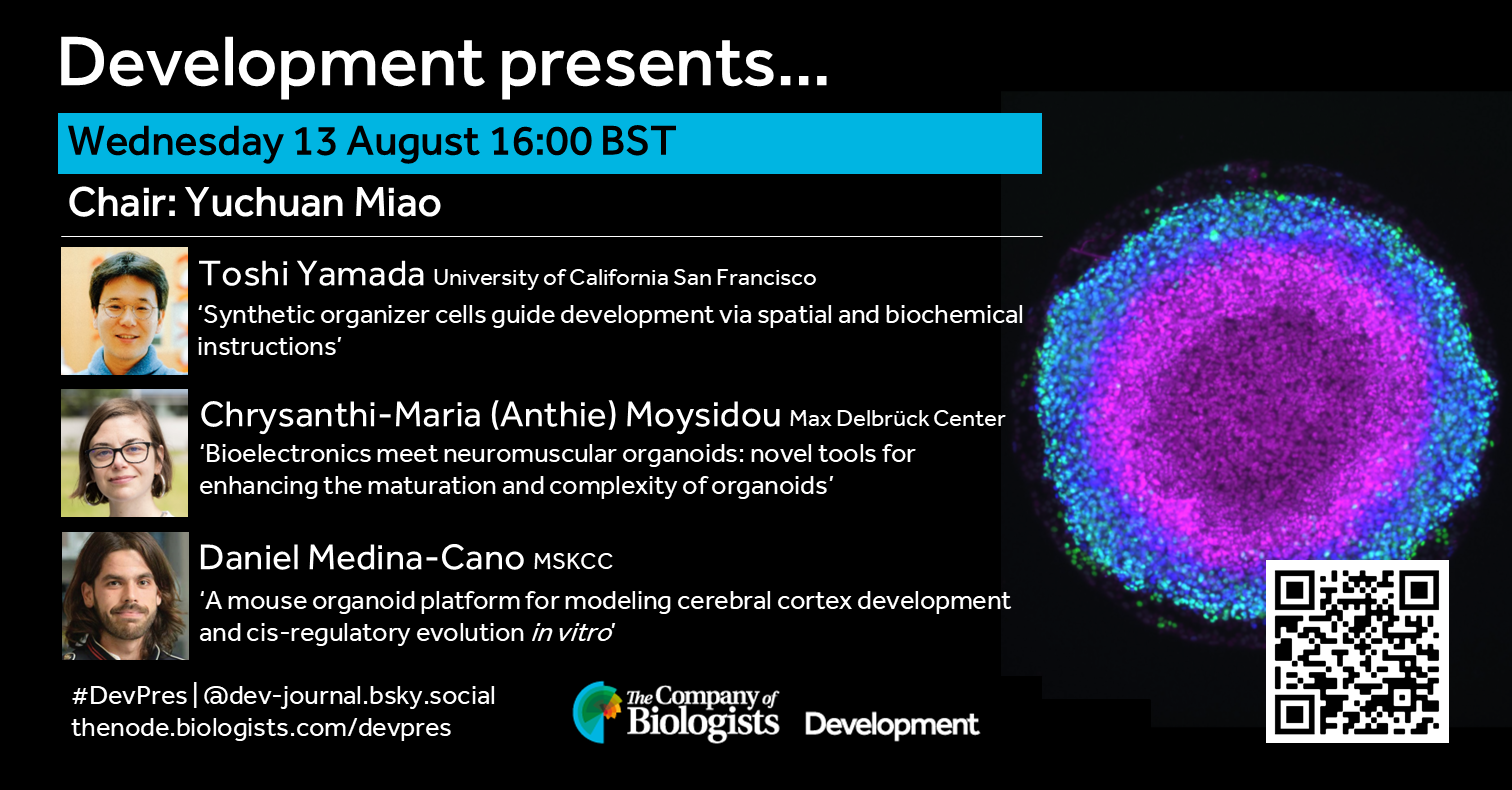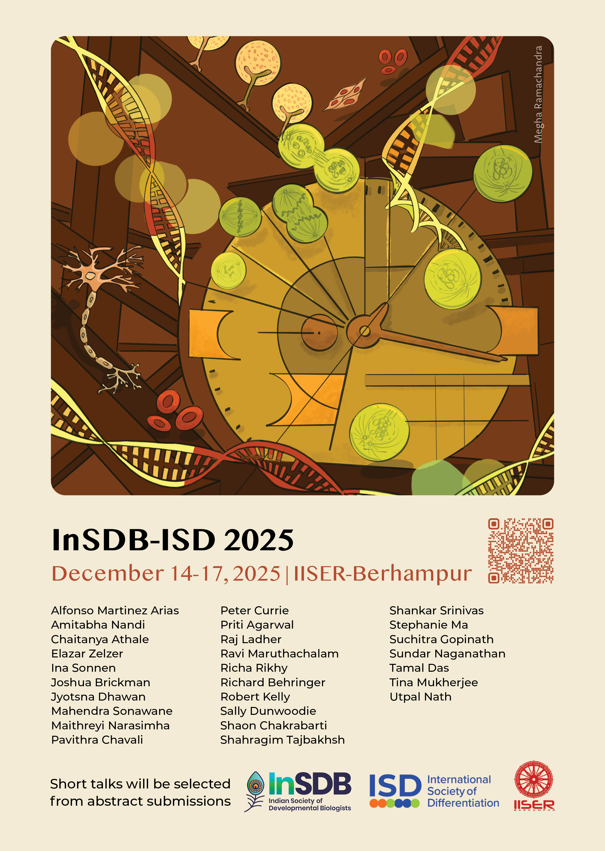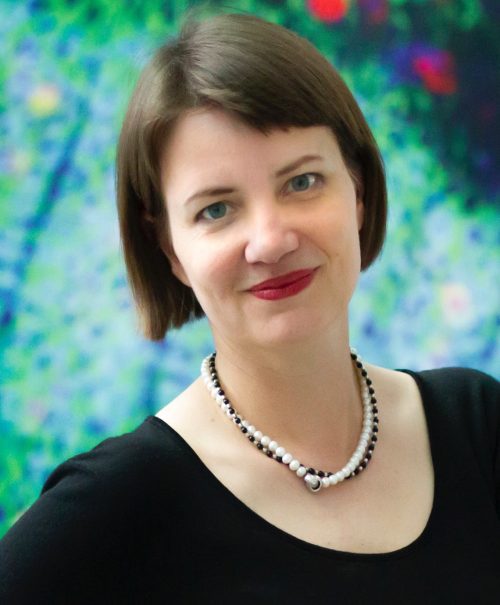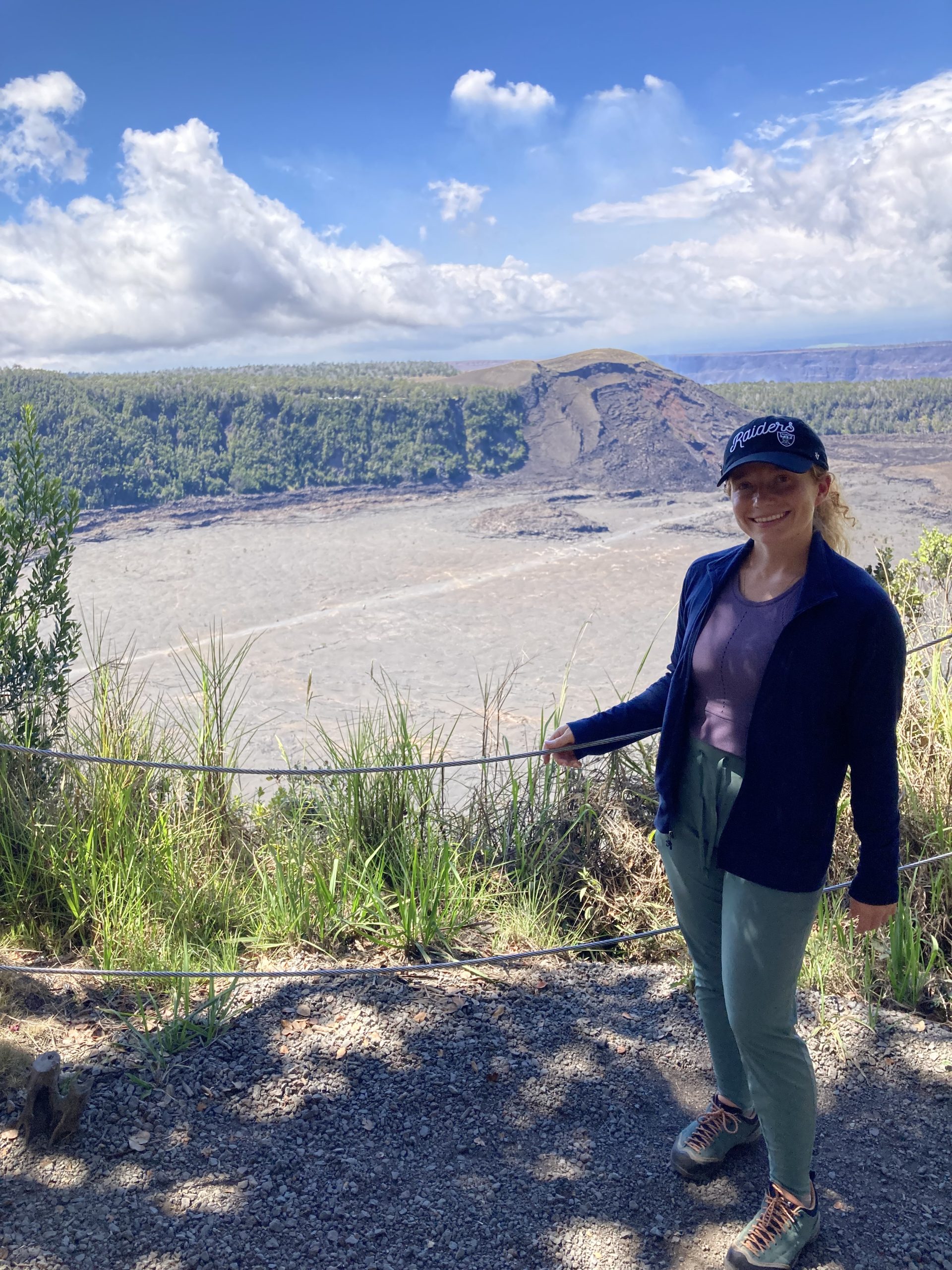July in preprints
Posted by the Node, on 12 August 2025
Welcome to our monthly trawl for developmental and stem cell biology (and related) preprints.
The preprints this month are hosted on bioRxiv – use these links below to get to the section you want:
- Patterning & signalling
- Morphogenesis & mechanics
- Genes & genomes
- Stem cells, regeneration & disease modelling
- Plant development
- Environment, evolution and development
Research practice and education
Spotted a preprint in this list that you love? If you’re keen to gain some science writing experience and be part of a friendly, diverse and international community, consider joining preLights and writing a preprint highlight article.
Developmental biology
| Patterning & signalling
Deconstructing the common anteroposterior organisation of adult bilaterian guts
Stefano Davide Vianello, Ching-Yi Lin, Wahyu Cristine Pinem, Han-Ru Li, Kun-Lung Li, Grace Sonia, Shu-Hua Lee, Szu-Kai Wu, Vincent Laudet, Yi-Hsien Su, Jr-Kai Yu, Stephan Q. Schneider
Alizarin red perturbs skeletal patterning and biomineralization via Catalase inhibition
Abigail E. Descoteaux, Marko Radulovic, Mayank Ghogale, Santhan Chandragiri, Deema Abayawardena, Bikram D. Shrestha, Athula H. Wikramanayake, Vivek N. Prakash, Cynthia A. Bradham
Spatiotemporal Coordination of Guidance Cues Directs Multipolar Migration During Retinal Lamination
Jaakko I Lehtimäki, Jingtao Lilue, Mario Del Rosario, Elisa Nerli, Ricardo Henriques, Caren Norden
Retinoic acid-responsive hox genes in hoxba and hoxbb clusters direct pharyngeal pouch formation in zebrafish
Sohju Toyama, Nanami Hamano, Junpei Imagawa, Takumi Sugawara, Renka Fujii, Morimichi Kikuci, Yuki Kawabe, Akinori Kawamura
Regulation of mRNA polyadenylation governs mammalian body plan formation in gastruloids
David Taborsky, Fabiola Valdivia-Francia, Neguin Ranjbar, Laura Llop-Grau, Clara Duré, Umesh Ghoshdastider, Peter F. Renz, Ramona Weber, Merve Yigit, Aleksei Mironov, Katie Hyams, Stefano Vianello, Mihaela Zavolan, Matthias P. Lutolf, Ataman Sendoel
Temporal coordination of tissue transformation, olfactory sensory neural development and central axon projections through morphogens
Shao-Chieh Chen, Tsai-Ming Lu, Chun-Ting Lin, Iris Low, Ya-Hui Chou
Dual Bmp-negative feedback loops modulate both AER and ZPA function to buffer and constrain postaxial digit number
Rashmi Patel, Susan Mackem
A hormonally regulated gating mechanism controls EMT timing to ensure progenitor cell specification occurs prior to epithelial breakdown
Andrew T Plygawko, Jamie Adams, Zack Richards, Kyra Campbell
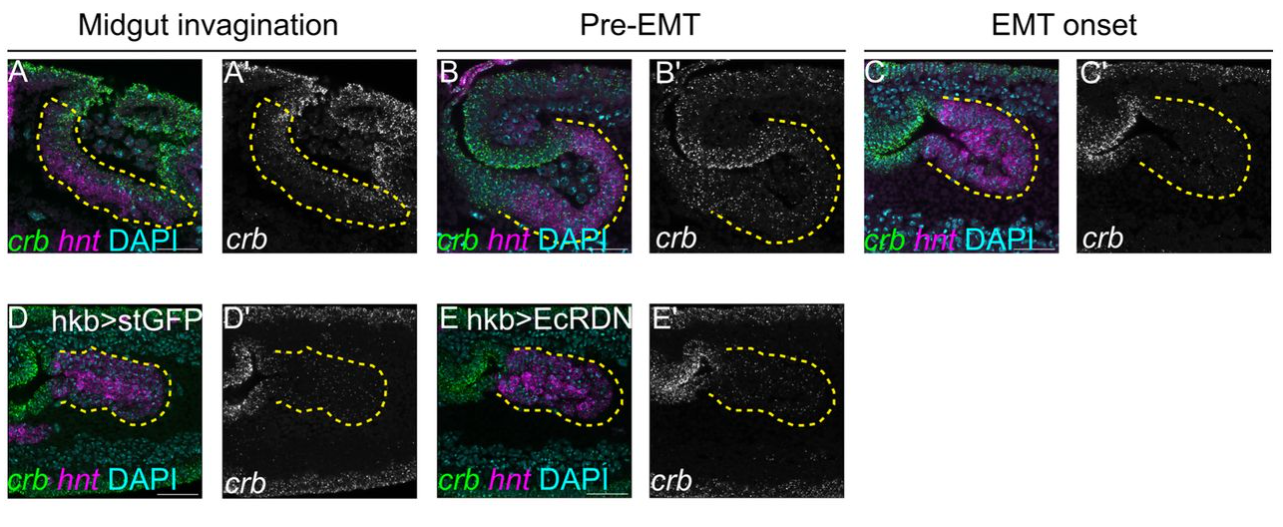
The Calcium Pump ATP2B1/PMCA1 Regulates CNS Vascular Development by Facilitating Norrin- and WNT7A/B-induced Frizzled4 signaling
Ha-Neul Jo, Elizabeth Kiffmeyer, Chi Zhang, Lingling Zhang, Emmanuel Odame, Quynh Chau Dinh, Jacklyn Levey, Miranda Howe, Kyle J. Roux, Klaus-Dieter Fischer, Zhe Chen, Harald J. Junge
Hedgehog and Bmp signaling pathways play opposing roles during establishment of the cardiac inflow tract in zebrafish
Rhea-Comfort A. Robertson, Hannah G. Knight, Catherine Lipovsky, Jie Ren, Neil C. Chi, Deborah Yelon
A pivotal role for Wnt antagonists in constraining Wnt activity to promote digit joint specification
Bau-Lin Huang, Sean Davis, Eiki Koyama, Maurizio Pacifici, Susan Mackem
The neurotrophin DNT-2 regulates cell survival and connectivity via the Toll-2 receptor during visual system development of Drosophila
Naser Alshamsi, Francisca Rojo-Cortés, Bangfu Zhu, Samaher Fahy, Guiyi Li, Anna Lassota, Marta Moreira, Alicia Hidalgo
Gradient of Wnt signaling facilitates Mef2 heterogeneity and limits commitment of the developmental muscle progenitor pool
Laura Schütze, Maria Jelena Musillo, Bilyana Popova, Natalja Engel, Verena Holzwarth, Milena Lucia Hild, Anna Geissdorf, Jennifer Nadine Gross, Ingrid Lohmann, Josephine Bageritz
Dynamic Functional Pathway Development in Type 1 Spinal Interneurons: Stage-specific roles of retinoic acid activity
Dina Rekler, Sarah Kagan, Noa Rachel Krutous, Gilgi Friedlander, Chaya Kalcheim
Quantifying bristle cell organization in Drosophila melanogaster using spatial clustering features
Wisdom K. Attipoe, Audrey Neighmond, Oakley Waters, S.H Dinuka Sewwandi De Silva, Ginger L. Hunter, Emmanuel Asante-Asamani
Socially regulated developmental plasticity in the color pattern of an anemonefish
Laurie J. Mitchell, Saori Miura, Youjung Han, Jann Zwahlen, Camille A. Sautereau, Bruno Frédérich, Vincent Laudet
A novel function for Prdm12 during neural crest migration reveals a link between Wnt and N-cadherin
Subham Seal, Cécile Milet, Chenxi Zhou, Anne-Hélène Monsoro-Burq
A neurovascular template guides the spatial and functional compartmentalization of the adrenal gland
Alessia Motta, Santo Diprima, Aurora Badaloni, Ganesh Parameshwar Bhat, Elena Ioannou, Chiara Malpighi, Ilaria Brambilla, Chiara Saulle, Alessandro Sessa, Christiana Ruhrberg, Dario Bonanomi
Essential regulation of heparan sulfate proteoglycan signalling controls cell behaviour to support cardiac development
Andia N. Redpath, Irina-Elena Lupu, Louis Haffreingue, Quang Dang, Ian R. McCracken, Tamara Carsana, Toin H. van Kuppevelt, Joaquim Miguel Vieira, Nicola Smart
Nuclear rerouting of paracrine Fgf3 in source cells represses target genes to pattern morphogen responses
Sevi Durdu, Murat Iskar, Alicia Roig-Merino, Elisa Gallo, Ezgi Karaca, Andreas Kunze, Erika Donà, Peer Bork, Dirk Schübeler, Darren Gilmour
| Morphogenesis & mechanics
Three-Dimensional-Mapping of Smooth Muscle Morphogenesis in the Vertebrate Gastrointestinal Tract
Salomé Ruiz Demoulin, Amandine Falco, Norbert Chauvet, Pascal de Santa Barbara, Sandrine Faure
Mechanical Coordination of Intestinal Cell Extrusion by Supracellular 3D Force Patterns
Marija Matejčić, Meng Wang, Elia López Serrano, Carlos Pérez-González, Ronja Houtekamer, Gerardo Ceada, Pere Roca-Cusachs, Martijn Gloerich, Xavier Trepat
Long-range chemical signalling in vivo is regulated by mechanical signals
Eva K. Pillai, Sudipta Mukherjee, Niklas Gampl, Ross J. McGinn, Katrin A. Mooslehner, Julia M. Becker, Alex Winkel, Amelia J. Thompson, Kristian Franze
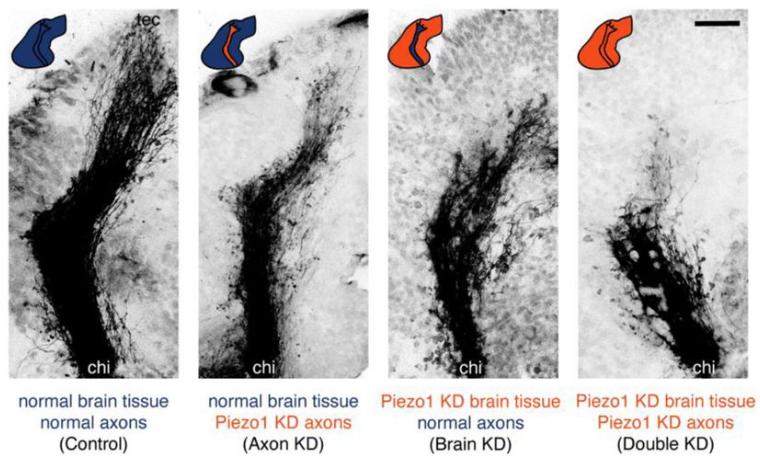
A protocadherin mediates cell-cell adhesion and integrity of the oral placode in the tunicate Ciona
Sriikhar Vedurupaka, Bita Jadali, Christopher J. Johnson, Alberto Stolfi, Sydney Popsuj
Three-Dimensional Mechanical Cooperativity Optimises Epithelial Wound Healing
Shu En Lim, Pablo Vicente-Munuera, Robert J. Tetley, Martin Zhang, José J. Muñoz, Yanlan Mao
Transient versican expression is required for β1-Integrin accumulation during podocyte layer morphogenesis in amphibian developing kidney
Isabelle Buisson, Jean-François Riou, Muriel Umbhauer, Ronan Le Bouffant, Valérie Bello
Basal Cell-Contact Dynamics Influence Tissue Packing in a Proliferating Mammalian Epithelium
Subramanian P. Ramanathan, Tanmoy Sarkar, Matej Krajnc, Rosemary Mwithiga, Azize Cerci, Chongbei Zhao, Matthew C. Gibson
Molecular dynamics of the matrisome across sea anemone life history
B. Gideon Bergheim, Alison G. Cole, Mandy Rettel, Frank Stein, Stefan Redl, Michael W. Hess, Aissam Ikmi, Suat Özbek
A role for Myosin in triggering and executing amnioserosa cell delaminations during dorsal closure
Nicole Gorfinkiel, Yanara Ferrer, Jon Recalde, Javier Gutiérrez, Guillermo Sáez
Dynamic interactions between epithelial skin cells and a sensory cavity sculpt the growing olfactory orifice
Gordillo Pi Clara, Cabrera Mélody, Gilles Jean-François, Bardet Pierre-Luc, Eschstruth Alexis, Bonnet Isabelle, Breau Marie Anne, Baraban Marion
| Genes & genomes
KMT2C and KMT2D regulate skeletal development through stage-specific epigenetic control of chondrogenesis
Gabrielle Quickstad, Dimitrios V. Bikas, Sara Vardabasso, Karl B. Shpargel
Single-oocyte transcriptional profile of early-stage human oocytes reveals differentially expressed genes in the primordial and transitioning stages
J. H. Machlin, D. F. Hannum, A. S.K. Jones, T. Schissel, K. Potocsky, E. E. Marsh, S. Hammoud, V. Padmanabhan, J.Z. Li, A. Shikanov
Nucleation-dependent propagation of Polycomb modifications emerges during the Drosophila maternal to zygotic transition
Natalie Gonzaga-Saavedra, Eleanor A. Degen, Isabella V. Soluri, Corinne Croslyn, Shelby A. Blythe
Transcriptome comparison between the cultured and in vivo Chick Primordial Germ Cells by SMART-seq-based single cell RNA sequencing
Yoshiki Hayashi, Atsushi Doi, Hiroko Iikawa, Hirokazu Kimijima, Yutaka Suzuki, Akinori Kanai, Hideki Hirakawa, Daisuke Saito
Early transcriptional divergence underlies cell fate bias in bovine embryos
Koyama Hinata, Daisuke Mashiko, Masahiro Kaneda, Atchalalt Khurchabilig, Satoshi Sugimura
Disruption of hemocyte differentiation and distribution in Drosophila Ptr23c mutants
Cristina Parada, María Constanza Silvera, Tabaré de los Campos, Rafael Cantera, Carmen Bolatto, Daniel Prieto
An Epigenomic Roadmap Primes Non-Growing Oocytes for Maturation and Early Embryogenesis
Mengwen Hu, Yasuhisa Munakata, Yu-Han Yeh, Han Wang, Neil Hunter, Richard M. Schultz, Satoshi H. Namekawa
FLYWCH transcription factors act in a LIN-42/Period autoregulatory loop during gonad migration in C. elegans
Brian Kinney, Jason Menjivar-Hernandez, Fred Koitz, Dmitry Grinevich, Madonna Baselios, Christopher M. Hammell, Kacy Lynn Gordon
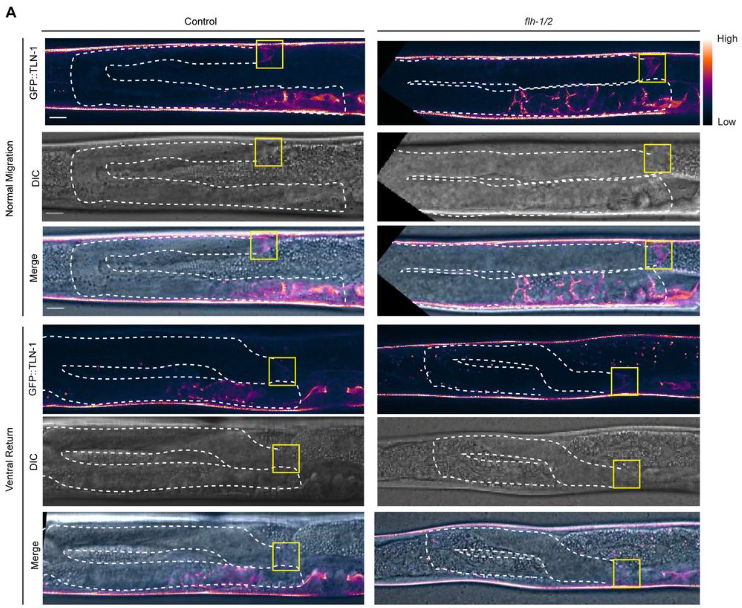
Conserved roles of GATA4 and its target gene TBX2 in regulation of human cardiogenesis
Nicola Graham, Pavel Kirilenko, Ilya Patrushev, Ewan D. Fowler, Peter Kille, Michael Gilchrist, Nick D.L. Owens, Branko Latinkic
Single-nucleotide Resolution Epitranscriptomic Profiling Uncovers Dynamic m6A Regulation in Bovine Preimplantation Development
Rajan Iyyappan, Yichi Niu, Ming Hao, Kinga Pajdzik, Noah R. Rakestraw, Piyush K. Jain, Chuan He, Chenghang Zong, Zongliang Jiang
Predicting disease-overarching therapeutic approaches for Congenital Disorders of Glycosylation using multi-OMICS
I.J.J. Muffels, R. Budhraja, R. Shah, S. Radenkovic, E. Morava, T Kozicz
Genetic variation reveals a homeotic long noncoding RNA that modulates human hematopoietic stem cells
Peng Lyu, Gaurav Agarwal, Chun-Jie Guo, Tianyi Ye, Chen Weng, Mateusz Antoszewski, Samantha Joubran, Alexis Caulier, Michael Poeschla, Vijay G. Sankaran
Novel Fluorescent and Photoconvertible Fusions Reveal Dorsal Activator Dynamics
Meghan A. Turner, Nicholas M. Gravina, Bruno Moretti, Sadia Dima, Gabriella Martini, Greg Reeves, Hernan G. Garcia
Genetic lineage tracing identifies intermediate mesoderm as a novel contributor to mammalian kidney lymphatics
Daniyal J Jafree, Lauren G Russell, Athanasia Stathopoulou, Christopher J Rowan, Andrew T White, Charlotte O’Riordan, Maria Kolatsi-Joannou, Karen L Price, Sarah Ivins, Liam A Ridge, Catherine Roberts, Jennie C Chandler, Laura Wilson, Dale Moulding, Julie Siegenthaler, Adrian S Woolf, Paul R Riley, Christiana Ruhrberg, Peter J Scambler, Norman D Rosenblum, David A Long
The CFII components PCF11 and Cbc change subnuclear localization as cells differentiate in the male germ line adult stem cell lineage
Iliana Nava, Margaret T. Fuller, Lorenzo Gallicchio
PRDM paralogs are required for Meckel’s cartilage formation during mandibular bone development
Qootsvenma Denipah-Cook, Bryanna V. Saxton, Kristin B. Artinger, Lomeli C. Shull
SOX9 is part of a combinatorial marker that reveals early development and embryological origins of the mouse brown adipose tissue depots
Ava E. Brent, Rika Chan, Vaishnavi Sirkay, Brian R. Morton, Jennifer H. Mansfield
Single-cell spatial mapping reveals reproducible cell type organization and spatially-dependent gene expression in gastruloids
Catherine G. Triandafillou, Pranav Sompalle, Yael Heyman, Arjun Raj
The SMARCA5–DMRT1 Pioneer Complex Establishes Epigenetic Priming to Direct Male Germline Development
Yuka Kitamura, Yasuhisa Munakata, Hironori Abe, Mengwen Hu, Satoyo Oya, Shanmathi Murugesan, Mahnoor Rizwan, Shawna P. Katz, David J. Picketts, Richard M. Schultz, Satoshi H. Namekawa
Developmental analysis of the cone photoreceptor-less little skate retina
Chetan C. Rangachar, Denice D. Moran, Mark M. Emerson
Lower-order methylation states underlie the maintenance and re-establishment of Polycomb modifications in Drosophila embryogenesis
Eleanor A. Degen, Natalie Gonzaga-Saavedra, Shelby A. Blythe
DAXX governs the silencing of LINE1 during spermatogenesis in mice
Zejia Li, Chaoyang Xiong, Jin Shen, Chen Tan, Dupeng Ma, Jun Chen, Rong Liu, Qi Sun, Weihao Gong, Wenming Yuan, Mengya Huang, Li Huang, Yueqiu Tan, Guohong Li, Mengcheng Luo
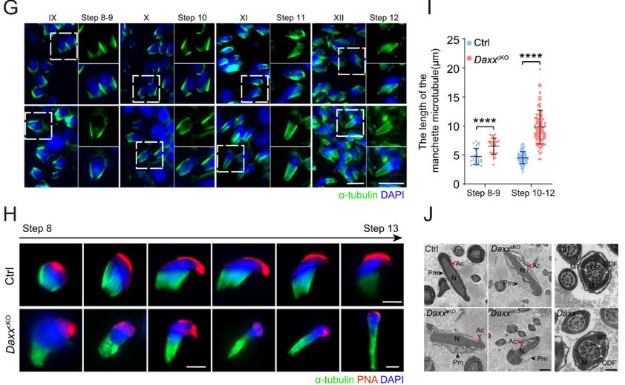
Polycomb Repressive-Deubiquitinase Complex Safeguards Oocyte Epigenome and Female Fertility by Restraining Polycomb Activity
Jinwen Kang, Peiyao Liu, Shoko Ichimura, Lauryn Cook, Zhiyuan Chen
Nuclear RNA cap-chaperones eIF4E and NCBP2 govern distinct fates for 1000s of mRNAs uncovering an unexpected regulatory point in gene expression
Jean-Clement Mars, Caleb M. Embree, Biljana-Culjkovic-Kraljacic, Aidan W.B. Carlile, Patrick Gendron, Katherine L.B. Borden
Maternal CENP-C restores centromere symmetry in mammalian zygotes to ensure proper chromosome segregation
Catherine A. Tower, Gabriel Manske, Emily L. Ferrell, Dilara N. Anbarci, Kelsey Jorgensen, Binbin Ma, Mansour Aboelenain, Rajesh Ranjan, Saikat Chakraborty, Lindsay Moritz, Arunika Das, Michele Boiani, Ben E. Black, Shawn Chavez, Erica E. Marsh, Ariella Shikanov, Karen Schindler, Xin Chen, Saher Sue Hammoud
The Dream and MEC NuRD Complexes reinforce SPR-5/MET-2 maternal reprogramming to maintain the germline-soma distinction
Sindy R. Chavez, Jazmin Dozier, Saahj P. Gosrani, Sandra K. Nguyen, Jovan S. Brockett, Sarah D. Blancher, Sydney L. Morgan-Benitez, Juan D. Rodriguez, Onur Birol, Monica N. Reeves, Karen L. Schmeichel, David J. Katz, Brandon S. Carpenter
Loss of CTLH component MAEA impairs DNA repair and replication and leads to developmental delay
Soren H. Hough, Satpal S. Jhujh, Samah W. Awwad, Simon Lam, John C. Thomas, Oliver Lewis, Thorsten Mosler, Aldo S. Bader, Lauren E. Bartik, Shane McKee, Shivarajan M. Amudhavalli, Estelle Colin, Nadirah Damseh, Emma Clement, Pilar Cacheiro, Anirban Majumdar, Damian Smedley, Isabelle Thiffault, Guido Zagnoli Vieira, Rimma Belotserkovskaya, Stephen J. Smerdon, Petra Beli, Yaron Galanty, Christopher J. Carnie, Grant S. Stewart, Stephen P. Jackson
Approximate Bayesian computation supports a high incidence of chromosomal mosaicism in blastocyst-stage human embryos
Qingya Yang, Sara A. Carioscia, Matthew Isada, Rajiv C. McCoy
| Stem cells, regeneration & disease modelling
MYCBP interacts with Sakura and Otu and is essential for germline stem cell renewal and differentiation and oogenesis
Azali Azlan, Ryuya Fukunaga
From Development to Regeneration: Insights into Flight Muscle Adaptations from Bat Muscle Cell Lines
Fengyan Deng, Valentina Peña, Pedro Morales-Sosa, Andrea Bernal-Rivera, Bowen Yang, Shengping Huang, Sonia Ghosh, Maria Katt, Luciana Castellano, Cindy Maddera, Zulin Yu, Nicolas Rohner, Chongbei Zhao, Jasmin Camacho
Genetics of growth rate in induced pluripotent stem cells
Brian N. Lee, Henry J. Taylor, Filippo Cipriani, Narisu Narisu, Catherine C. Robertson, Amy J. Swift, Neelam Sinha, Tingfen Yan, Lori L. Bonnycastle, Nathan Dale, Annie Butt, Hemant Parsaud, Stefan Semrau, NYSCF Global Stem Cell Array Team, GENESiPS Consortium, iPSCORE Consortium, Joshua W. Knowles, Ivan Carcamo-Orive, Agnieszka D’Antonio-Chronowska, Kelly A. Frazer, Leslie G. Biesecker, Scott Noggle, Michael R. Erdos, Daniel Paull, Francis S. Collins, D. Leland Taylor
Epidermal Stem Cells Control Periderm Injury Repair via Matrix-Driven Specialization of Intercellular Junctions
Helen Mengze He, Liana C. Boraas, Jon M. Bell, Xiangyu Gong, Sophia L. Iannaccone, Zhang Wen, Michael Mak, Marina Carlson, Kaelyn Sumigray, Stefania Nicoli
Two parallel lineage-committed progenitors contribute to the developing brain
Carolyn E. Dundes, Rayyan T. Jokhai, Hadia Ahsan, Rachel S. Kang, Rachel E.A. Salomon-Shulman, Arjun Rajan, Yoon Seok Kim, Liam J. Stanton, Christine Xu, Stephanie Do, Brennan D. McDonald, José Miguel Andrade López, Hugo A. Urrutia, Hannah Greenfeld, Alicia Wong, Yimiao Qu, Andrew S. Petkovic, Yi Miao, K. Christopher Garcia, Michelle Monje, Daniel E. Wagner, Marianne E. Bronner, Christopher J. Lowe, Kyle M. Loh
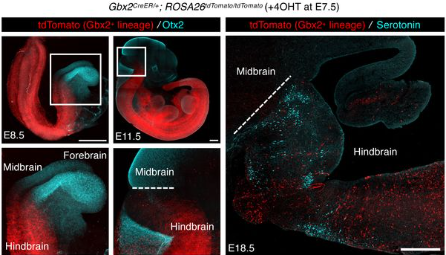
An organoid model of the menstrual cycle reveals the role of the luminal epithelium in regeneration of the human endometrium
Konstantina Nikolakopoulou, Weand Ybañez, Lhéanna Klaeylé, Lisa Frugoli, Hans-Rudolf Hotz, Charlotte Soneson, Margherita Yayoi Turco
Thrombin-preconditioned Mesenchymal Stem Cell-Derived Exosomes For Wound Healing in vitro and in vivo
Liu Yang, Minming Lou, Hongwei Wang, Shuo Zhang, Jie Ma
ASD mutations in the ciliary gene CEP41 impact development of projection neurons and interneurons in a human cortical organoid model
Kerstin Hasenpusch-Theil, Alexandra Lesayova, Zrinko Kozic, Mariana Beltran, Grace Wilson, Neil C Henderson, Owen Dando, Thomas Theil
Fetal reversion from diverse lineages sustains the intestinal stem cell pool and confers stress resilience
Sakura Kirino, Fumiya Uefune, Kensuke Miyake, Nobuhiko Ogasawara, Sakurako Kobayashi, Satoshi Watanabe, Yui Hiraguri, Go Ito, Keiichi Akahoshi, Daisuke Ban, Johan H. van Es, Hans Clevers, Mamoru Watanabe, Ryuichi Okamoto, Shiro Yui
Stem cells actively suppress regenerative plasticity in human colon
Joris H. Hageman, Defne Yalcin, Julian R. Buissant des Amorie, Sascha R. Brunner, Thomas A. Kluiver, Aleksandra Balwierz, Franziska L. Langner, Maria C. Puschhof, Yannik Bollen, Thanasis Margaritis, Hugo J.G. Snippert
Gastruloid patterning reflects division of labor among biased stem cell clones
Vinay Ayyappan, Catherine Triandafillou, Kavitha Sarma, Arjun Raj
Single-cell spatial mapping reveals reproducible cell type organization and spatially-dependent gene expression in gastruloids
Catherine G Triandafillou, Pranav Sompalle, Yael Heyman, Arjun Raj
Juxtaposition of human pluripotent stem cells with amnion-like cells is sufficient to trigger primitive streak formation
Xiangyu Kong, Anastasiia Nemashkalo, M Cecilia Guerra, Miguel Angel Ortiz-Salazar, Elena Camacho-Aguilar, Aryeh Warmflash
Her9 is required for the migration, differentiation, and survival of neural crest cells
Cagney E. Coomer, Sumanth Manohar, Evelyn M. Turnbaugh, Ann C. Morris
Wnt5a gain- and loss-of-function present distinctly in craniofacial bone
Claire J. Houchen, Portia Hahn Leat, Cassandra Delich, Jocelyn Vang, Sara Haggard, Joseph L. Roberts, Hicham Drissi, Erin E. Bumann
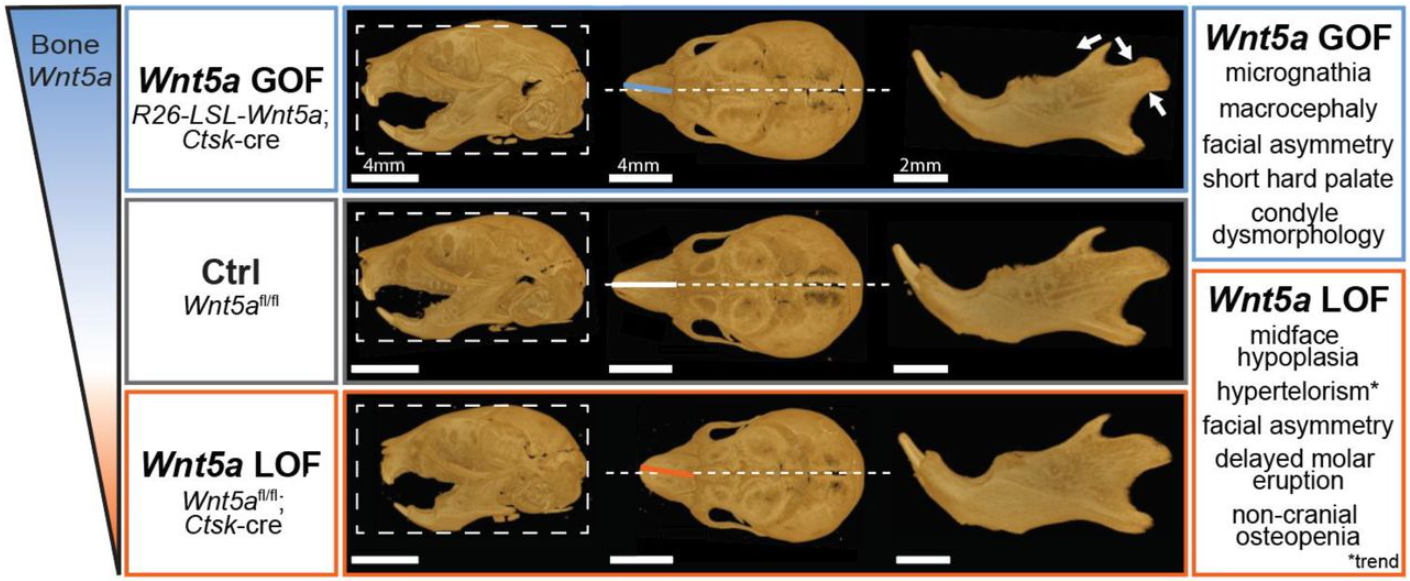
The CPEB ortholog Orb2 regulates brain size through the TRIM-NHL RNA-binding protein, Brain tumor
Taylor Hailstock, Joseph Buehler, Beverly V. Robinson, Timothy C.H. Low, Yuqing Hua, Temitope H. Adebambo, Jack Govaerts, Todd A. Schoborg, Howard D. Lipshitz, Dorothy A. Lerit
HSD17B7 is required for Auditory Function by Regulating Cholesterol Synthesis in Sensory Hair Cells
Yuqian Shen, Ziyang Wang, Xun Wang, Fuping Qian, Mingjun Zhong, Xin Wang, Jing Cheng, Dong Liu
Primary cilia and BBS4 are required for postnatal pituitary development
Kathryn M. Brewer, Katlyn K. Brewer, Nicholas C. Richardson, Jeremy F. Reiter, Nicolas F. Berbari, Mia J. Konjikusic
Single Cell RNA Sequencing and Spatial Profiling Identify Mechanisms of Neonatal Brain Hemorrhage Development and Resolution
Santiago A. Forero, Zhihua Chen, Ali Pirani, Arpan De, Zachary Wise, John E. Morales, Joseph H. McCarty
Identification and Characterization of Adult Islet Pancridia Cells Capable of Differentiating into Islet Organoids
Carly M. Darden, Jayachandra Kuncha, Jeffrey T. Kirkland, Jordan Mattke, Srividya Vasu, Bashoo Naziruddin, Michael C. Lawrence
DNAH14 deficiency impairs sperm motility by reducing flagellar beat amplitude
Yawen Liu, Yanan Zhao, Yali Qiu, Jiaxin Zeng, Haifeng Xu, Bingbing Wu, Xiang Tang, Liying Wang, Wei Li, Chao Liu
Developmental wave of programmed ganglion cell death in human retinal organoids
Tara Brooks, Yuna K. Park, Anne Vielle, Michael Ha, Katia Del Rio-Tsonis, Michael L. Robinson, M. Natalia Vergara
Expression of mutant TIE2 p.L914F during mouse development causes embryonic lethality and defects in vascular remodeling
Lindsay J Bischoff, Sandra Schrenk, Kara Soroko, Elisa Boscolo
Cell Cycle Arrest of a ‘Zippering’ Epithelial Cell Cluster Shapes the Face and is Disrupted in Craniofacial Disorders
T. Qu, B.H. Chacón, L. Faure, M. Losa, R. Hernández-Martínez, K. Robinson, A. Jones, S. Lisgo, J. De Anda, M. Risolino, G. Panagiotakos, E.J. Leslie-Clarkson, I. Adameyko, L. Selleri
Postnatal Abrogation of VEGFR2 Blocks Terminal Cap2 Differentiation by Preventing the Developmental Progression from a Capillary Intermediate Cell State
Daoqin Zhang, Carsten Knutsen, David J. Stroud, Cristina M. Alvira
JAG2-related muscular dystrophy and Notch signaling dysfunction in muscle stem cells
Nam Chul Kim, Minoru Tanaka, Isabelle Draper, Hannah R. Littel, Mekala Gunasekaran, Johnnie Turner, Natalya M. Wells, Qasim Mujteba, Yoko Asakura, Peter B. Kang, Atsushi Asakura
Retinal pigment epithelium-derived PD-L1 reprograms microglial cells and protects against retinal degeneration in mouse models of experimental AMD and genetic retinitis pigmentosa
Zhongyuan Su, Jing Wang, Qinghua Lai, Zhenhang Wang, Pingping Liu, Zhiyan Tang, Hang Yu, Yu Chen, Xiaoyin Ma, Ling Hou
Fibroblast depletion reveals mammalian epithelial resilience across neonatal and adult stages
Isabella M. Gaeta, Shuangshuang Du, Clémentine Villeneuve, David G. Gonzalez, Catherine Matte-Martone, Smirthy Ganesan, Deandra Simpson, Jessica L Moore, Chen Yuan Kam, Sara Gallini, Haoyang Wei, Fabien Bertillot, Dagmar Zeuschner, Lauren E. Gonzalez, Kaelyn D Sumigray, Sara A Wickström, Valentina Greco
Multilayered molecular and cellular mechanisms underlying intestinal epithelial regeneration
Dong Woo Seo, Seungsoo Kim, Hoibin Jeong, Mi Hyeon Cho, Ming Gyeong Lee, Jea Hwa Jang, Jun-Seok Lee, Sang-Hyun Choi, Dong-Hoon Kim, Jungmin Choi, Yong Taek Jeong
| Plant development
Ligand-induced ubiquitination regulates endocytosis and homeostasis of the ERECTA receptor kinase for stomatal development
Liangliang Chen, Minh Huy Vu, Alicia M. Cochran, Crystal F. Ying, Keiko U. Torii
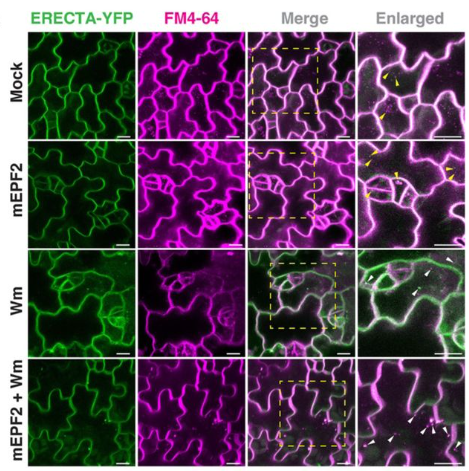
Pathogenic fungus exploits the lateral root regulators to induce pluripotency in maize shoots
Mamoona Khan, Nithya Nagarajan, Kathrin Schneewolf, Caroline Marcon, Danning Wang, Frank Hochholdinger, Peng Yu, Armin Djamei
Interaction of Wnt and SHH gradients synchronizes cell cycle exit and differentiation
Ruiqi Li, Yiqun Jiang, Sarah Platt, Kevin A. Peterson, Hainan Lam, Sarah Van, Chae Ho Lim, Jonathan Levinsohn, Eva-Larue Barber, David Wang, M. Mark Taketo, Yuval Kluger, Peggy Myung
Coordinated regulation of trichome morphogenesis and flavonoid pathway by a MYB–HDZIP–JAZ module in banana (Musa sp.)
Samar Singh, Shivi Tyagi, Prashant Misra, Ashutosh Pandey
The proximal proteome of FLOWERING LOCUS T LIKE 1 during rice panicle development suggests cell-to-cell mobility features
Daniele Chirivì, Giulia Ave Bono, Jeroen de Keijzer, Ludovico Dreni, Franco Faoro, Francesca Giaume, Cristina Ferrándiz, Fabio Fornara, Camilla Betti
Photoperiodic effects on early plant development in everbearing and seasonal flowering strawberry
Stephan David, Gabriela Ficová, Leo F.M. Marcelis, Julian C. Verdonk
Shedding light on the embryo:endosperm balance diversity that pseudogamy can achieve in the polyploid apomictic Psidium cattleyanum (Myrtaceae, Myrteae)
Claudia Da Luz-Graña, Magdalena Vaio, Joerg Fuchs, Alejandra Borges, Gabriela Speroni
Overcoming extensive redundancy in the arabidopsis TREHALOSE-6-PHOSPHATE PHOSPHATASE gene family reveals connections to development and iron homeostasis
Tara Skopelitis, Kyle W Swentowsky, Alexander Goldshmidt, Regina Feil, John E. Lunn, David Jackson
Optimized LC-MS method for simultaneous polyamine profiling and ADC/ODC activity quantification and evidence that ADCs are indispensable for flower development in tomato
Erin Samantha Ritchie, Edda von-Roepenack-Lahaye, Dennis Perrett, Dousheng Wu, Thomas Lahaye
Brassinosteroids mediate proper coordination of sepal elongation
Byron Rusnak, Lilijana Oliver, Kyle Procopio, Adrienne Roeder
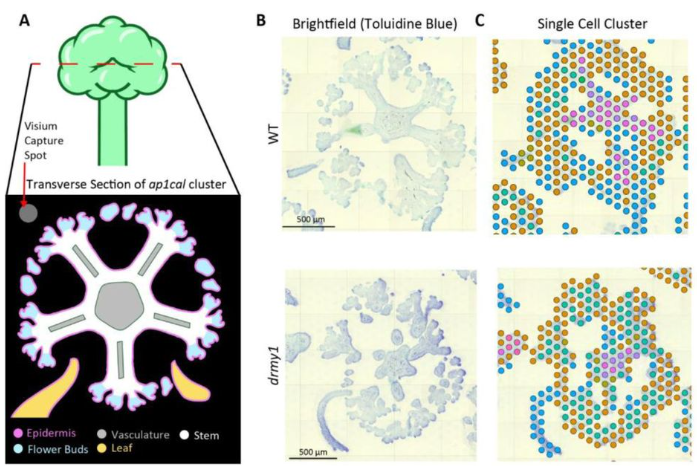
Fragaria ananassa DAM4 expression correlates with vegetative growth during endodormancy breaking
Stephan David, Philippe Kersten, Xiren Cao, Leo F.M. Marcelis, Julian C Verdonk
Loss of Nucleotide Sugar Transporter (AtNST) gene function in the Golgi membranes impairs pollen development and embryo sac progression in Arabidopsis thaliana
Rimpy Diman, Pinninti Malathi, Ramamurthy Srinivasan, Shripad Ramchandra Bhat, Sreenivasulu Yelam
De novo meristem development in Marchantia requires light and an apical auxin minimum
Eva-Sophie Wallner, Natalie Edelbacher, Liam Dolan
Sex-Specific Ethylene Responses Drive Floral Sexual Plasticity in Cannabis
Adrian S. Monthony, Julien Roy, Maxime de Ronne, Olivia Carlson, Susan J. Murch, Davoud Torkamaneh
ARABIDOPSIS Bsister and SEEDSTICK MADS-box transcription factors modulate maternal nutrient flow for seed development in Arabidopsis
Camilla Banfi, Nicola Babolin, Chiara Astori, Chiara Mizzotti, Rosario Vega-Léon, Giulia Leo, Ueli Grossniklaus, Matthew R. Tucker, Fabrizio Araniti, Riccardo Aiese Cigliano, Walter Sanseverino, Ignacio Ezquer, Jose M. Muino, Kerstin Kauffman, Maurizio Di Marzo, Lucia Colombo
Comparative Proteomic Profiling of Receptor Kinase Signaling Reveals Key Trafficking Components Enforcing Plant Stomatal Development
Pengfei Bai, Minh Huy Vu, Chiaki Komatsu, Ophelia Papoulas, Kazuo Ebine, Akira Nozawa, Tatsuya Sawasaki, Takashi Ueda, Edward M. Marcotte, Keiko U. Torii
WALLFLOWER, an Arabidopsis receptor-like kinase, is polarized in root epidermal cells where it represses cell elongation impacting root waving
Patricio Pérez-Henríquez, Jessica N. Toth, Cecilia Rodriguez-Furlan, Rachel E. De La Torre, Jaimie M. Van Norman
Brassinosteroid controls leaf air space patterning non-cell autonomously by promoting epidermal growth
James M. Fitzsimons, Ana B. Rock, Richard L. De Falbe, Samantha Fox, Chris D. Whitewoods
| Environment, evolution and development
Gamete release in Ciona robusta: roles of gonadotropin-releasing hormone and the photoreception system
Tomohiro Osugi, Shin Matsubara, Akira Shiraishi, Azumi Wada, Yuki Miyamoto, Issei S. Shimada, Yasunori Sasakura, Takehiro G. Kusakabe, Honoo Satake
Establishment, conservation, and innovation of dorsal determination mechanisms during the evolution of vertebrate paired appendages
M. Brent Hawkins, Sofía Zdral, Silvia Naranjo, Miguel Juliá, Manuel Sánchez-Martín, Jacob M. Daane, Nicolas Cumplido, David Jandzik, Daniel M. Medeiros, Sarah K. McMenamin, Matthew P. Harris, Juan J. Tena, Marian A. Ros
Genetic mapping in the red mason bee Osmia bicornis implicates ANTSR as an ancient sex-determining locus in bees and ants
Tilman Rönneburg, Demetris Taliadoros, Anna Olsson, Sara Magnusson, Linn Huser, Muhammad Nafiz Ikhwan Bin Nor Fuad, Turid Everitt, Giselle C. Martín-Hernández, Björn Cederberg, Robert J. Paxton, Karsten Seidelmann, Matthew T. Webster
Evolutionary dynamics of the vertebrate Wnt gene repertoire
Lily G. Fogg, Maxime Policarpo, Walter Salzburger
Developmental system drift in the patterning of the arthropod tarsus
Benjamin C. Klementz, Sophie M. Neu, Ethan M. Laumer, Emily V.W. Setton, Isaac A. Hinne, Austen A. Barnett, Max Hämmerle, Georg Brenneis, Monika Gulia-Nuss, Prashant P. Sharma
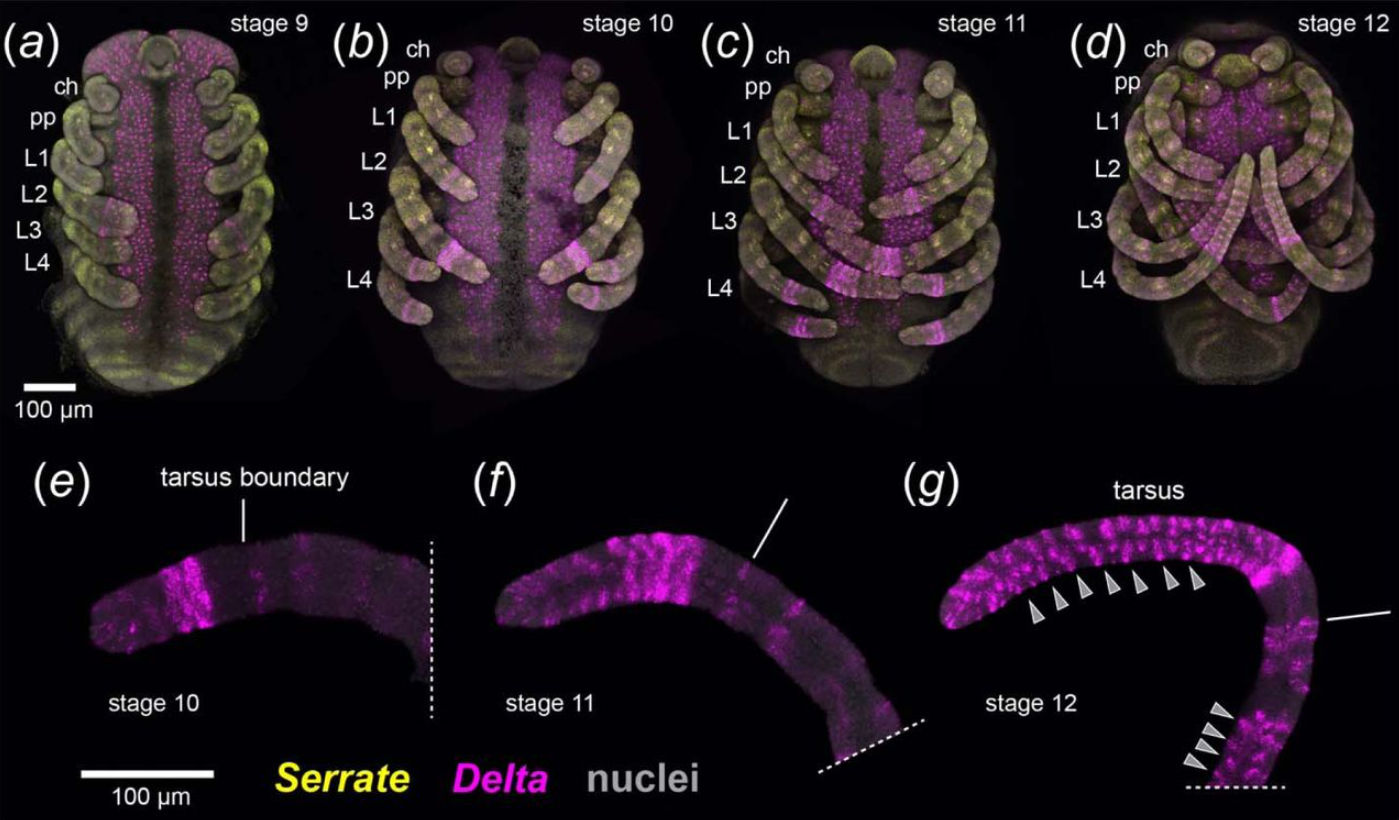
Maternal high-fat/high-sugar diet has short-term dental effects and long-term sex-specific skeletal effects on adult offspring mice
Mohamed G. Hassan, Kyle Koester, Natalia S. Harasymowicz, Arin K. Oestreich, Kelle H. Moley, Farshid Guilak, Erica L. Scheller
Nuclear Hormone Receptor NHR-49/HNF4α Couples Fertility Regulation to Resource Allocation and Longevity in C. elegans
Sharada Gopal, Amaresh Chaturbedi, Tej Ramachandrula, John OuYang, Rebecca Rodell, Siu Sylvia Lee
Glycogen metabolism in mouse embryonic Sertoli cells sustains the germ line through the lactate shuttle
Martín A. Estermann, Joseph Sheheen, Sara A. Grimm, Boris Tezak, Yu-Ying Chen, Tsuyoshi Morita, Humphrey H.C. Yao, Blanche Capel
SPEECHLESS duplication in grasses expands potential for environmental regulation of stomatal development
Joel M. Erberich, Britney Bennett, Dominique C. Bergmann
Neural crest cell biology shapes lizard skull evolution across evolutionary time scales
Quentin Horta-Lacueva, Tobias Uller, Morris Flecks, Mariam Gabelaia, Christy Anna Hipsley, Martin Kirchner, Johannes Müller, Nathalie Feiner
Cell Biology
Autism-associated oxysterol regulates GABAergic neurogenesis and subtype fates
Maria Cruz-Santos, Ethan Kidd, Zongze Li, Daniel Cabezas De La Fuent, Sara Davies, Ngoc-Nga Vinh, Marija Fjodorova, Meng Li
Tumour-driven lipid accumulation in oenocytes reflects systemic lipid alterations
Chang Liu, Sofya Golenkina, Louise Y Cheng
Physical and functional interaction of Lrrc56 and Odad3 controls deployment of axonemal dyneins in vertebrate multiciliated cells
Nayeli G. Reyes-Nava, Chanjae Lee, Ophelia Papoulas, Juyeon Hong, Edward M. Marcotte, John B. Wallingford
A non-canonical role for Jagged1 in endothelial mechanotransduction
Freddy Suarez Rodriguez, Noora Virtanen, Elmeri Kiviluoto, Rob C. H. Driessen, Feihu Zhao, Carlijn V. C. Bouten, Oscar M. J. A. Stassen, Cecilia M. Sahlgren
Single-cell dissection of cervix and placenta reveal both novel and overlapping cell types
Margot van Riel, Lore Lannoo, Anne Pexsters, Olga Tsuiko, Ilse Parijs, Irene Claes, Thierry Voet, Dirk Timmerman, Joris R. Vermeesch
Renin Cells Drive Kidney Neurovascular Development and Arterial Remodeling when Renin Activity is Deficient
Manako Yamaguchi, Hiroki Yamaguchi, Jason P. Smith, Lucas Ferreira de Almeida, Daisuke Matsuoka, Alexandre G. Martini, Sara M Wilmsen, Sijie Hao, Kazuki Tainaka, Silvia Medrano, Maria Luisa S. Sequeira Lopez, R. Ariel Gomez
Deletion of the scavenger receptor Scarb1 in osteoblast progenitors and myeloid cells does not affect bone mass
Michela Palmieri, Teenamol E Joseph, Horacio Gomez-Acevedo, Ha-Neui Kim, Stavros C Manolagas, Charles A O’Brien, Elena Ambrogini
A Novel Mouse Model Reveals a Role for Mitochondria in Early Lineage Specification and Gastrulation
Mona Ahmed, Niyati Gadepalli, Gayathri PS, Anjana Badrinarayanan, Raj K Ladher
Somatic cells compartmentalise their metabolism to sustain germ cell survival
Diego Sainz de la Maza, Holly Jefferson, Celine I. Brucker, Sonia Paoli, Marc Amoyel
Electron transport chain complex I and mitochondrial fusion regulate ROS for differentiation in Drosophila neural stem cells
Rahul Kumar Verma, Atharva Bhingare, Dnyanesh Dubal, Richa Rikhy
Two Spag6 genes control sperm formation and male fertility in mice
Yunhao Liu, Wei Li, Tao Li, Cheng Zheng, Changmin Niu, Alain Schmitt, Yi Tian Yap, Mohammad Abdulghani, Shuiqiao Yuan, Christian Melander, Jerome F Strauss III, Aminata Toure, Ling Zhang, Zhibing Zhang
Chromosome Ageing Occurs at the Primordial Follicle Stage in both Mouse and Human Oocytes
Matilda Bui, Apiwat Moolnangdeaw, Hannes Becher, Shelagh Boyle, Vlastimil Srsen, Yvonne L. Odey, Richard A. Anderson, Evelyn E. Telfer, Ian R. Adams
Dicer is essential for proper maturation, composition, and function in the postnatal retina
Seoyoung Kang, Daniel Larbi, Eik Bruns, Konstantin Hahne, Alireza Khodadadi-Jamayran, Chaitra Sreenivasaiah, Mariana Lima Carneiro, Monica Andrade, Khulan Batsuuri, Shaoheng Chen, Julia Jager, Suresh Viswanathan, Brian S. Clark, Stefanie G. Wohl
The Drosophila ovarian terminal filament imports molecules needed to produce lipid droplets, the fusome, and functional germ cells
Bhawana Maurya, Allan C Spradling
Partial coupling of the proliferation and differentiation programs during C. elegans intestine development
Joris Dieng, Harpreet Singh, Grégoire Michaux, Anne Pacquelet
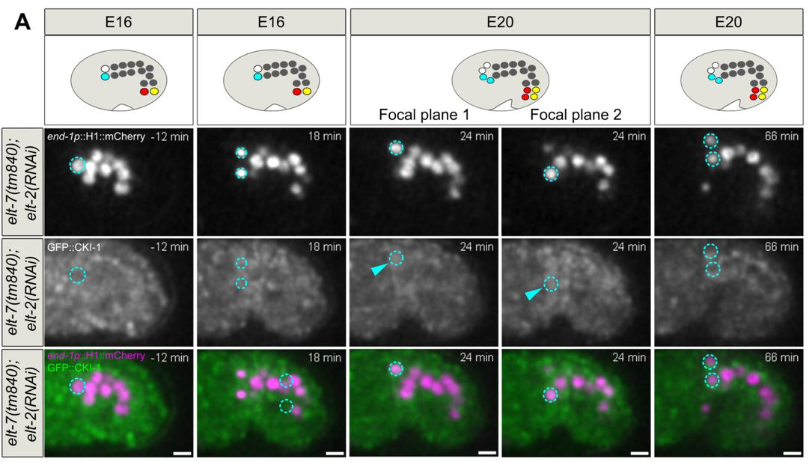
Early female germline development in Xenopus laevis: stem cells, nurse cells and germline cysts
Asya Davidian, Allan C Spradling
Cytoplasmic localization of the mRNA encoding actin regulator, Serendipity-α, promotes adherens junction assembly and nuclear repositioning
Tejas Mahadevan, Lauren Renee Figard, Hasan Seede, Poonam Sehgal, Yuncong Geng, Kevin McDonald, Ido Golding, Anna Marie Sokac
The chicken retrovirus-like gene ENS-1/ERNI and its LTR Soprano are involved in primordial germ cell development
Yuya Okuzaki, Akane Kawaguchi, Yumi Ozaki, Takeo Uemura, Daisuke Saito, Ken-ichi Nishijima
The rupture and independent extension of sister membranes in C. elegans embryos
Jingjing Liang, Tingrui Huang, Xun Huang, Mei Ding
The Rho effector ARHGAP18 coordinates a Hippo pathway feedback loop through YAP and Merlin to regulate the cytoskeleton and epithelial cell polarity
Emma C. Murray, Gillian M. Hodge, Khanh Pham, Leighton S. Lee, Cameron A.R. Mitchell, Yongho Bae, Andrew T. Lombardo
Opposing roles for lipocalins and a CD36 family scavenger receptor in apical extracellular matrix-dependent protection of narrow tube integrity
Alexandra C. Belfi, Sage G. Aviles, Rachel Forman-Rubinsky, Hasreet K. Gill, Jennifer D. Cohen, Aleksandra Nawrocka, Axelle Bourez, Pierre van Antwerpen, Patrick Laurent, Meera V. Sundaram
Chromosomes remain individualized through interphase in embryos of the tardigrade Hypsibius exemplaris
Lillian D. Papell, Adriana N. Coke, Bailey N. de Jesus, Clayton J. Harry, Pu Zhang, Bob Goldstein
Hbs and Rst adhesion molecules provide a regional code that regulates cell elimination during epithelial remodelling
Miguel Ferreira-Pinto, Mario Aguilar-Aragon, Christa Rhiner, Eduardo Moreno
SRSF12 is a primate-specific splicing factor that induces a tissue-specific gene expression program
Jimmy Ly, Sarah L. Cady, Ekaterina Khalizeva, Sofia Haug, Iain M. Cheeseman
Homer condensates orchestrate YAP-Wnt signaling crosstalk downstream of the Crumbs polarity complex
Siti Maryam J M Yatim, Linda Jiabao Woo, Yuhong Chen, Barbara Hübner, Alexander Ludwig
Microtubule curling as an efficient readout to uncover fundamental concepts of axonal cell biology
André Voelzmann, Milli Owens, Robin Beaven, William Cairns, Abigail Elliot, Sheng-Hui Feng, Catarina Goncalves-Pimentel, Ines Hahn, Ella Jones, Kodie Norris, Thomas Murphy, Yu-Ting Liew, Lydia Lorenzo-Cisneros, Judith Fuelle, Liliana M. Pinho-Correia, Yue Qu, Natalia, Tarunima Sharma, Sánchez-Soriano, Andreas Prokop
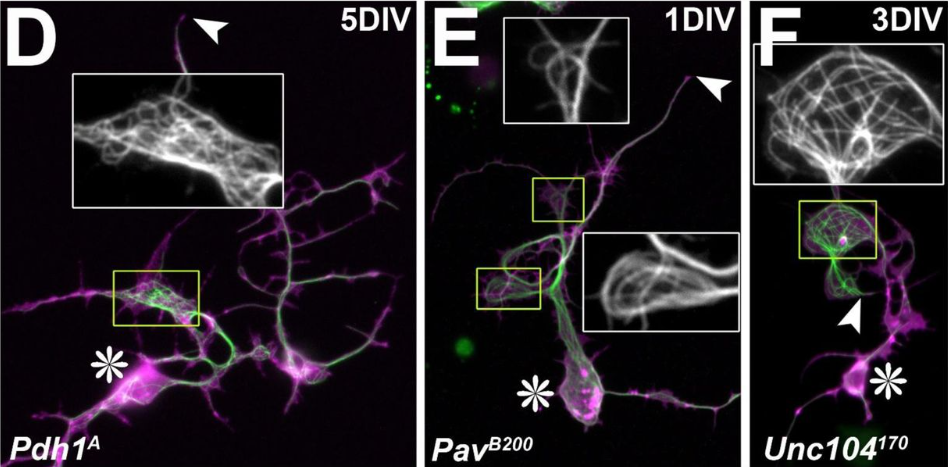
Modelling
A mathematical framework for human neutrophil state transitions inferred from single-cell RNA sequence data
Gustaf Wigerblad, Jonathan Carruthers, Sumanta Ray, Thomas Finnie, Grant Lythe, Carmen Molina-París, Saumyadipta Pyne, Mariana J. Kaplan
Molecular noise modulates transitions in the cell-fate differentiation landscape
Y. Liu, A. Zanca, M.P.H. Stumpf, L. Ham
Directed cell migration is a versatile mechanism for rapid developmental pattern formation
Chengyou Yu, Malte Mederacke, Roman Vetter, Dagmar Iber
Tools & Resources
Quantitative high-resolution imaging of mouse nephron formation to study Wnt signaling dynamics
Nobuko Tsuchida-Straeten, Simon Hammer, Aliaksandr Halavatyi, Christian Tischer, Gislene Pereira, Matias Simons
Cell atlas of the developing human meninges reveals a dura origin of meningioma
Elin Vinsland, Sergio Marco Salas, Ivana Kapustová, Lijuan Hu, Simone Webb, Xiaofei Li, Xiaoling He, Mats Nilsson, Muzlifah Haniffa, Roger Barker, Oscar Persson, David R. Raleigh, Erik Sundström, Peter Lönnerberg, Sten Linnarsson
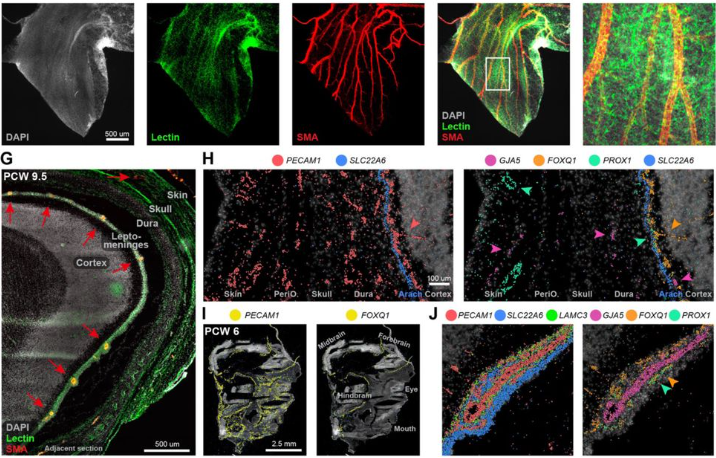
Protocol combining RNA interference and regeneration assays in planarian embryos
Ennis W. Deihl, Clare L. T. Booth, Erin L. Davies
A genetic model for development, physiology and behavior of zebrafish larvae devoid of catecholamines
Susana Paredes-Zúñiga, Rebecca Peters, Kristine Østevold, Gerard Arrey, Dennis Frank, Johannes Oswald, Florian Veit, Theresa Schredelseker, Jochen Holzschuh, Wolfgang Driever
Mapping mesenchymal diversity in the developing human intestine and organoids
Kelli F. Johnson, Xiangning Dong, Yu-Hwai Tsai, Angeline Wu, Sydney G. Clark, Sha Huang, Rachel K. Zwick, Ian Glass, Katherine D. Walton, Ophir D. Klein, Jason R. Spence
Cryopreservation of Sea Urchin (Lytechinus pictus) Embryos and Development Through Metamorphosis
Victor D. Vacquier, Amro Hamdoun
SlimVar for rapid in vivo single-molecule tracking of chromatin regulators in plants
Alex L. Payne-Dwyer, Geng-Jen Jang, Caroline Dean, Mark C. Leake
Research practice & education
A retrospective analysis of 400 publications reveals patterns of irreproducibility across an entire life sciences research field
Joseph Lemaitre, Désirée Popelka, Blandine Ribotta, Hannah Westlake, Sveta Chakrabarti, Li Xiaoxue, Mark A. Hanson, Haobo Jiang, Francesca Di Cara, Estee Kurant, Fabrice David, Bruno Lemaitre
Gender imbalances of retraction prevalence among highly cited authors and among all authors
Stefania Boccia, Antonio Cristiano, Angelo Maria Pezzullo, Jeroen Baas, Guillaume Roberge, John P.A. Ioannidis
Most science is published from countries lacking in democracy and freedom of press
John P.A. Ioannidis, Jeroen Baas
Addressing cultural and knowledge barriers to enable preclinical sex inclusive research
Brianna N. Gaskill, Benjamin Phillips, Jonathan Ho, Holly Rafferty, Oladele Olajide Onada, Andrew Rooney, Amrita Ahluwalia, Natasha A. Karp
U.S. Visa Bureaucracy and Its Burdens Among Early Career Scholars
Michel Nofal, Raquel Ferrer-Espada, Payel Ganguly, Mayank Chugh
The Intergenerational Classroom: A Case Study Integrating Undergraduate and Lifelong Learning Curricula for Biology Education
Julie Earles, Bethany Stanhope, Kristen Robbins, Alex C. Keene
Absolute and Relative Declines in National Institutes of Health (NIH) Funded Basic Science Publications
Michael S Lauer


 (No Ratings Yet)
(No Ratings Yet)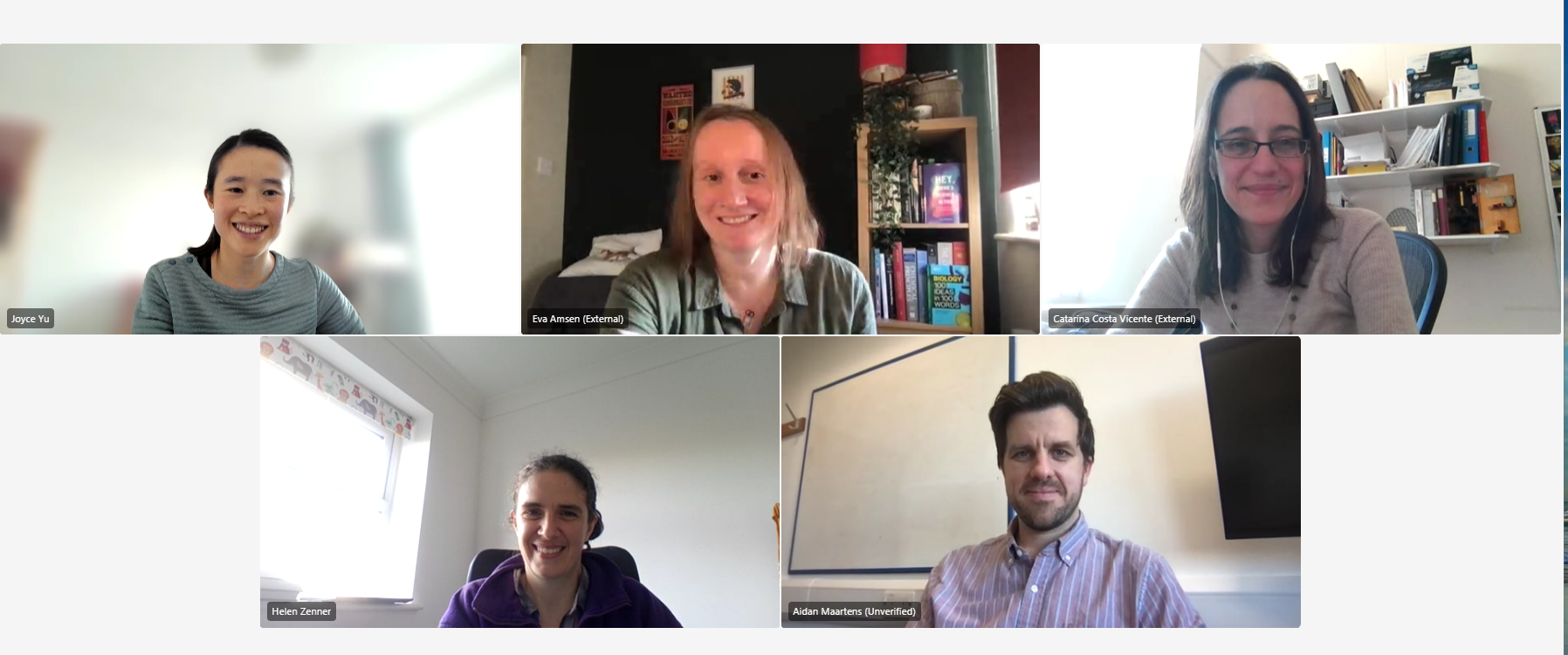
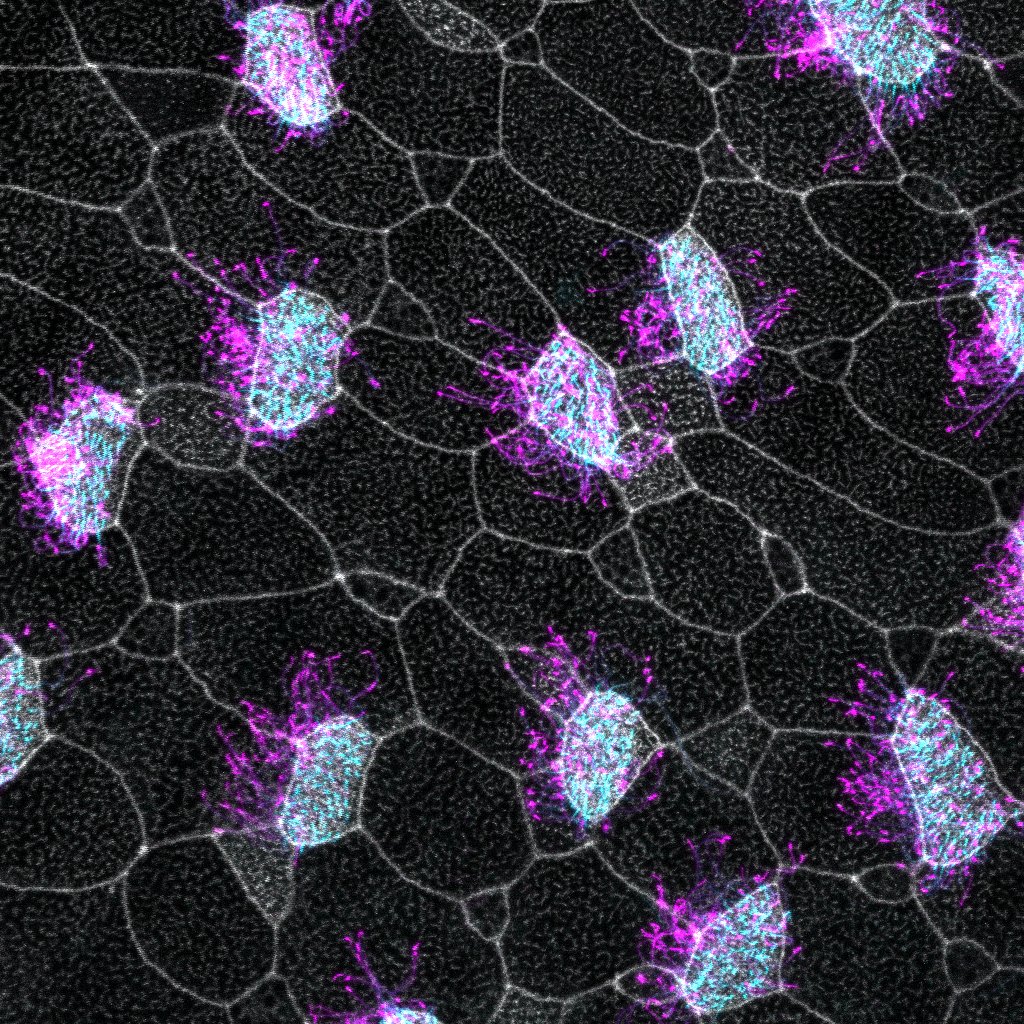

 (2 votes)
(2 votes)